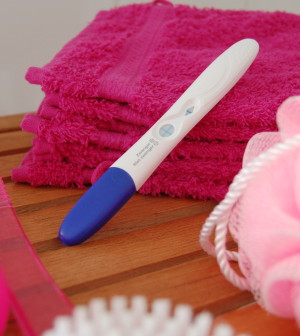- Navigating Your Midlife Crisis: Embracing New Possibilities
- City Raccoons Showing Signs of Domestication
- Mapping the Exposome: Science Broadens Focus to Environmental Disease Triggers
- One Week Less on Social Media Linked to Better Mental Health
- Your Brain Changes in Stages as You Age, Study Finds
- Some Suicide Victims Show No Typical Warning Signs, Study Finds
- ByHeart Formula Faces Lawsuits After Babies Sickened With Botulism
- Switch to Vegan Diet Could Cut Your Greenhouse Gas Emissions in Half
- Regular Bedtime Does Wonders for Blood Pressure
- Dining Alone Could Mean Worse Nutrition for Seniors
Know Your Risk for Ovarian Cancer — and the Symptoms

A major shift is needed in the prevention and treatment of ovarian cancer, according to a doctor who specializes in the disease.
“Ovarian cancer is often diagnosed too late,” said Dr. David Fishman, director of the cancer center and gynecologic oncology at NewYork-Presbyterian/Queens.
“It’s important for women to know their risk [of] contracting this deadly disease, and its earliest warning signs,” he added.
All women are at risk of ovarian cancer, and one in 75 will develop the disease, Fishman said. More than 250,000 women worldwide are diagnosed with ovarian cancer every year, and 140,000 die from it.
Fishman stressed that a clean pap test does not mean a woman’s ovaries are cancer-free. Pap tests diagnose cervical disease, not ovarian cancer.
Some call ovarian cancer a “silent” killer. Its early symptoms are mild and easy to ignore, according to Fishman. They include bloating, indigestion and nausea, pain in the abdomen and back, feeling full quickly, frequent urination, weight gain and shortness of breath. Women who have these symptoms for more than a week should consult a doctor, he suggested.
Ovarian cancer is highly treatable if detected early. If the cancer is just in the ovary (stage 1), the average five-year survival rate is 90 percent. However, the odds of survival are much lower if the cancer is more advanced, Fishman said in a hospital news release.
Women who have had breast cancer or certain other types of cancer are at increased risk. Other ovarian cancer risk factors include certain gene mutations, infertility, early menstruation, obesity and age. Women over age 70 have higher odds of developing the disease, researchers have found.
Several factors can reduce a woman’s risk, including: following a healthy, low-fat diet; having given birth; using birth control; and having tubal ligation surgery.
Some women at high risk have their ovaries and fallopian tubes removed as a precaution, said Fishman, who is also vice chairman of obstetrics and gynecology at the hospital.
For example, actress Angelina Jolie disclosed last year that she had her ovaries and fallopian tubes removed because she had a significantly increased risk of ovarian cancer due to the BRCA1 gene mutation.
More information
The U.S. Office on Women’s Health has more about ovarian cancer.
Source: HealthDay
Copyright © 2025 HealthDay. All rights reserved.










